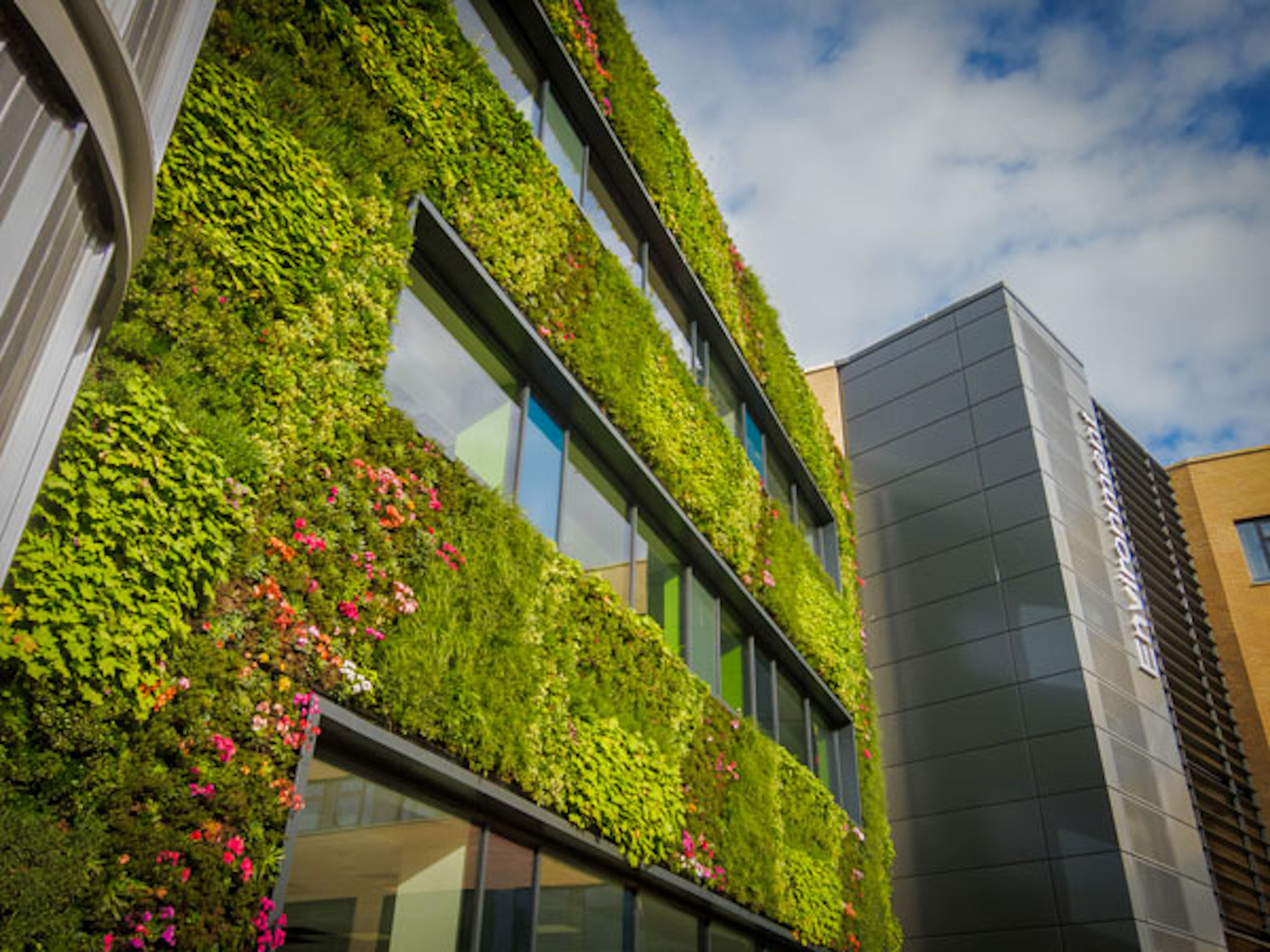The ‘Climate Emergency’ continues to drive a global focus on tackling climate change. Whilst there is no single solution to solve the crisis, there has been a clear worldwide shift in attitude, in both a personal and corporate capacity, to address the pressures our planet faces.
When it comes to the design and construction of buildings and cities, there is a crucial responsibility to be aware of - the impact of architecture on our planet.
With nearly 40% of annual CO2 emissions globally generated by the building sector alone, it’s clear to see that the architectural and construction community’s use of materials and energy has severe repercussions on our climate.
But there is hope. Whilst the construction of buildings is a major contributor to global warming, we can have a huge impact in tackling climate change by substituting how we design and build our new buildings, and how we maintain and support our existing architecture.
In this article we explore the link between sustainable architecture and tackling climate change. Here’s what we can do to make architecture more sustainable.
Adapt and retrofit our existing buildings
We’re always going to need new buildings, so it’s super important to focus our efforts on ensuring that the operating energy of new construction emits zero emissions.
But we have plenty of buildings that already exist, and they urgently need assistance.
According to the IPCC (Intergovernmental Panel on Climate Change), over two thirds of the building stock that exists today will still exist in 2050 in developed countries.
With demolition and new construction coming with a big carbon footprint, it’s vital that we adapt our existing buildings to be as environmentally-efficient as possible.
Without retrofitting the existing buildings around the world, these buildings will still be emitting alarming levels of CO2 emissions into the atmosphere in 2050 - preventing us from keeping global warming to the 1.5°C target.
Many buildings, especially in the UK, were built before the introduction of energy performance regulation. As a result, our homes and buildings are energy inefficient, leak-prone, and cold.
Achieving zero emissions from our existing buildings is key to a low-emission building sector. It will require accelerating the rate of energy upgrades, such as:
- Increasing energy efficiency in buildings
- Eliminating the use of fossil fuels in construction
- Generating or securing 100% renewable energy
Material changes to reinvent how we build
Cement production has increased 400% since 1990. However, it’s one of the most environmentally damaging materials we can use to construct our buildings - the world’s cement production generates over 2.2 billion tonnes of CO2 each year.
It’s clear to see that manufacturing steel and concrete has a hugely harmful impact on our climate.
When discussing carbon impact in the building sector, we use a term called ‘embodied carbon’ which refers to the carbon footprint represented by a building's materials.
To cut embodied carbon in our newly-constructed buildings, the world must reduce its use of highest-emitting materials, including concrete, steel and aluminium.
As discussed in our previous point, the most effective way to slash embodied carbon short-term is to retrofit an existing building. The greenest building is the one that’s already built.
However, we know that the world is always going to need new buildings. So, we must focus on making our new building carbon-neutral, either through material changes during construction, or by ensuring that our buildings do not contribute any CO2 to the atmosphere over its lifetime.
By using sustainably sourced wood, recycled building materials, and environmentally friendly alternatives to cement for the construction of new buildings, we can ensure that our architectures strive to be carbon-neutral. New buildings can also be fitted with advanced waste management solutions, and energy-efficient technology.
In fact, many architects are taking their carbon-neutral building goal a step further, by ensuring that new buildings are carbon-negative instead. This means that a building would actually remove more carbon from the atmosphere than it emits in its lifetime.
But just how can you make a building carbon-negative?
Strive for carbon negative buildings with living wall systems
Living walls can be installed to both existing and new buildings to drive the carbon-negative movement. Our living wall systems have several environmental benefits, including:
- Increased biodiversity
- Improved air quality / decreased air pollution
- Combat urban heat island effect in cities
- Improved energy efficiency / reduced heating bills
- Storm water management
Living wall systems from Viritopia
When you’re dealing with modern life in a high-density urban area, the opportunity to plant masses of trees is limited. Green roof systems and living walls are a fantastic alternative to maximised environmental gain in space-restricted areas.
Although green roof systems can’t tackle the issue of global warming alone. They, alongside sustainable architecture, can have a huge impact.
At Viritopia, we provide all types of buildings with integrated living walls systems that have been thoughtfully designed, expertly installed and safely maintained over the past 13 years.
If you’re looking to improve the air quality of your space, and have a positive impact on the local environments, get in touch with our expert team today.

